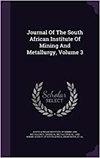Investigation of the mixing characteristics of industrial flotation columns using computational fluid dynamics
IF 0.9
4区 材料科学
Q3 Materials Science
Journal of The South African Institute of Mining and Metallurgy
Pub Date : 2022-06-10
DOI:10.17159/2411-9717/1589/2022
引用次数: 0
Abstract
The mixing characteristics of industrial flotation columns were investigated using computational fluid dynamics (CFD). Particular emphasis was placed on the clarification of the relationship between the liquid and solids mixing parameters such as the mean residence time and axial dispersion coefficients. The effects of particle size and bubble size on liquid dispersion in the column were also studied. An Eulerian-Eulerian method was applied to simulate the multiphase flow, while additional scalar transport equations were introduced to predict the liquid residence time distribution (RTD) and particle age distribution inside the column. The results obtained show that particle residence time decreases with increasing particle size. The residence time of the coarser particles (112.5 pm) was found to be at least 60% of the liquid residence time, while the finer particles (19 pm) had a residence time similar to the liquid. The results also show that an increase in the particle size of the solids results in a decrease in the liquid vessel dispersion number, while a decrease in the bubble size increases liquid axial mixing. Finally, the simulated axial velocity profiles confirm the similarity between the liquid and solids axial dispersion coefficients in column flotation.工业浮选柱混合特性的计算流体力学研究
利用计算流体动力学(CFD)研究了工业浮选柱的混合特性。特别强调澄清液体和固体混合参数之间的关系,如平均停留时间和轴向分散系数。还研究了颗粒大小和气泡大小对柱内液体分散的影响。采用欧拉-欧拉方法模拟多相流,同时引入额外的标量输运方程来预测柱内液体停留时间分布(RTD)和颗粒年龄分布。结果表明,颗粒停留时间随颗粒尺寸的增大而减小。发现较粗颗粒的停留时间(112.5pm)至少为液体停留时间的60%,而较细颗粒(19pm)的停留时间与液体相似。结果还表明,固体颗粒尺寸的增加导致液体容器分散数量的减少,而气泡尺寸的减少增加了液体的轴向混合。最后,模拟的轴向速度剖面证实了柱浮选中液体和固体轴向分散系数之间的相似性。
本文章由计算机程序翻译,如有差异,请以英文原文为准。
求助全文
约1分钟内获得全文
求助全文
来源期刊
CiteScore
1.50
自引率
11.10%
发文量
61
审稿时长
4-8 weeks
期刊介绍:
The Journal serves as a medium for the publication of high quality scientific papers. This requires that the papers that are submitted for publication are properly and fairly refereed and edited. This process will maintain the high quality of the presentation of the paper and ensure that the technical content is in line with the accepted norms of scientific integrity.

 求助内容:
求助内容: 应助结果提醒方式:
应助结果提醒方式:


